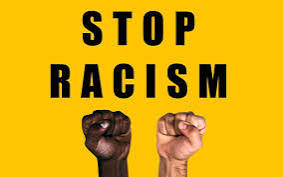What is Racial Segregation?

Racial segregation is the separation of people into different racial groups in daily life — in schools, neighborhoods, public facilities, transportation, and even employment — often enforced by laws or social norms. Its foundation lies in the false belief that one race is inherently superior to another.
Historical Roots of Racial Segregation
1. In the United States: Jim Crow Laws
After the abolition of slavery in 1865, southern U.S. states implemented Jim Crow laws — a set of regulations that legally separated Black Americans from whites. From separate schools to “whites-only” bathrooms and restaurants, these laws denied Black people basic rights and dignity.
- Plessy v. Ferguson (1896) legalized segregation, stating that “separate but equal” facilities were constitutional — though in practice, they were never equal.
- It wasn't until the Civil Rights Movement and Brown v. Board of Education (1954) that these laws began to be dismantled.
- Dr. Martin Luther King Jr. and others led powerful protests that helped bring an end to legalized racial segregation.
2. In South Africa: Apartheid System
In 1948, South Africa began its official apartheid policy — a system of institutionalized racial segregation. The white minority controlled the government and economy, while the Black majority was pushed into impoverished, overcrowded areas with limited rights.
- Apartheid separated people in every aspect of life: schools, transport, beaches, even marriage.
- Nelson Mandela spent 27 years in prison fighting this system before becoming South Africa’s first Black president in 1994, marking the official end of apartheid.
Forms of Racial Segregation Today
Though legally abolished in many countries, de facto segregation still exists today through:
- Housing discrimination
- Underfunded schools in minority communities
- Job inequality and racial profiling
- Over-policing and mass incarceration
In some societies, minority groups still face systemic exclusion and prejudice.
Why Racial Segregation is Harmful
Racial segregation:
- Dehumanizes targeted racial groups
- Limits access to quality education, healthcare, and jobs
- Fuels poverty and intergenerational inequality
- Creates division and conflict in society
Most importantly, it violates basic human rights and dignity.
The Ongoing Struggle for Racial Justice
Fighting racial segregation and racism is not just a thing of the past. Movements like:
- Black Lives Matter (USA)
- Rhodes Must Fall (South Africa and UK)
- Decolonize Education (Global)
… continue to push for equality, representation, and justice. Young people are using social media, protests, and education to demand change.
What Can We Do?
- Educate ourselves and others about history and current realities.
- Speak up against racism and discrimination when we see it.
- Support inclusive policies in schools, businesses, and governments.
- Celebrate diversity and promote cross-cultural understanding.
- Vote and advocate for leaders who promote equality.
Conclusion
Racial segregation may no longer be enshrined in many countries' laws, but its legacy is far from gone. Understanding its history and impact is the first step toward creating a more equal, just, and united world.
Let us choose inclusion over division, and work together for a future where race no longer determines a person's place in society.
Do you believe racial segregation still exists in your country? Share your thoughts in the comments below. Let’s keep the conversation going.
Imeandaliwa na ElimikaLeoTz ✍️
Whatsapp no 0768569349
Telegram no 0768569349
.png)

.jpeg)





0 Comments: